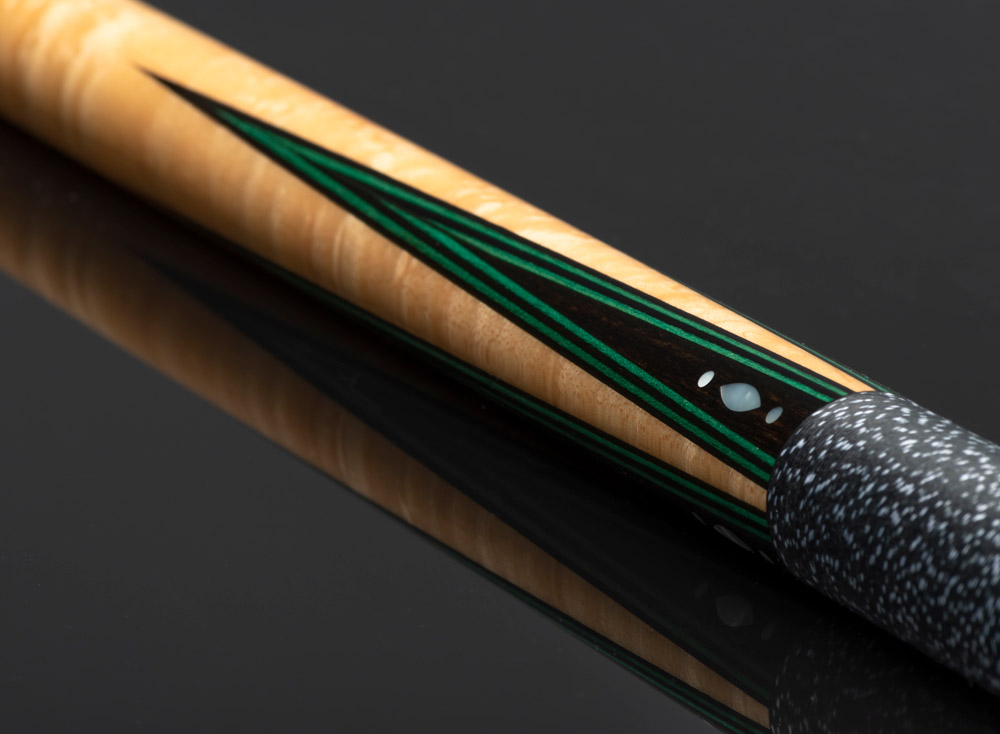For 1980, McDermott replaced the 4-year-old B-Series of cues with the C-Series. The new series offered more cues — 21 vs the B-Series’ 16 — new materials, and inlays of complex shapes. While a number of cues in the series introduced inlays that would reappear in future series, the C-18 introduced a new inlay that most McDermott fans would have a special affection for.
Inside each of the C-18’s cloud-shaped windows of bone urethane is a green clover. This clover inlay would reappear in 1994 for the limited edition Founder’s Cue, and would continue to show up periodically in M and G-Series cues, despite the development of a more advanced clover with a stem. In fact, the currently produced G413 uses the same clovers, albeit in black rather than green.
The sleeve of the C-18 was ebony with green fiber rings, and small Mother of Pearl dots that could be found just above and below the windows. These dots were also laid inside the points, above and below larger oval Mother of Pearl inlays. The points featured green fiber veneers to complement the sleeve and joint rings.
Placed firmly in the higher end of the C-Series, the C-18 would have cost a buyer $340, but it would have been money well spent. The C-18 is not only a good example of the differences between the C and B-Series, but is a great example of the quality that made McDermott famous.
The post OnCue: C-18, the First Clover Inlays appeared first on McDermott Cue Blog.




0 Comments